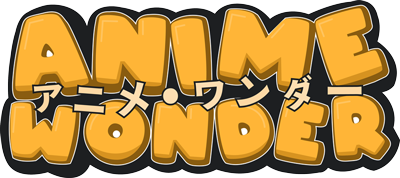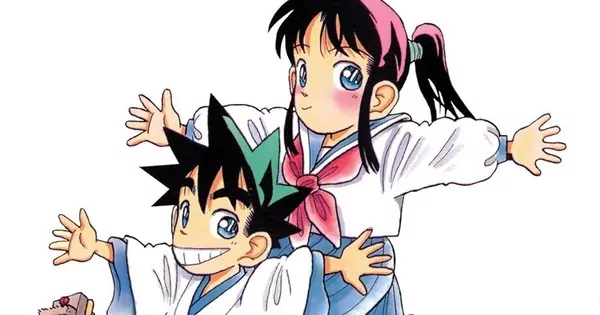With the new Yaiba anime currently on air, and quickly proving to be one of the most impressive looking action shows of the year, the folks at Viz Media have also seen fit to release the original manga to go with it. While I’ve been kinda mixed on the anime, it’s always neat to see older manga getting a new lease on life like this, and I have been at least a little curious about what differences exist between the two. Of course, the anime has been nothing to sneeze at when it comes to how visually distinct of an adaptation it is, and with it looking as good as it does, is there enough here to be worth giving the manga an extra glance?
So far, I’d say the answer is yes. Like the anime, the manga has a fairly simple premise as it follows the escapades of a jungle boy named Yaiba who’s been training with his father to become a samurai. After accidentally ending up in Japan, he becomes acquainted with a girl named Sayaka and moves into her family dojo. There, he ends up forming a rivalry with a young man named Onimaru, and as it escalates, Onimaru comes into possession of a dangerous sword known as the Fujinken, that grants him great power, but at the cost of gradually turning into an oni. As Onimaru decides to use his new powers to conquer Japan, Yaiba must master a magical sword of his own called the Raijinken, and try to crush Onimaru’s ambitions once and for all.
It’s a pretty straightforward set up for a battle shonen, and just like with the anime, all of it is delivered with the energy and comedic timing of a wacky cartoon as it rarely takes itself too seriously, and generally emphasizes gags over character drama. What largely separates the manga from its shiny new anime counterpart, however, is its pacing. Although the manic cartoon energy of the anime works for it more often than not, some of that comes at the expense of the story as it quickly moves from one plot beat to the next, and rarely gives the characters any room to breathe. In comparison however, the manga is paced much more like what you’d expect of a traditional battle manga. Rather than jumping straight into his rivalry with Onimaru, the manga takes a bit more time seeing Yaiba getting acclimated to life outside the jungle, and we get a couple of chapters about him doing things like getting into a duel with a teacher so he can join Sayaka’s class, or learning how to face off against other humans in a kendo match after spending so much of his life fighting wild animals. In the grand scheme of things these stories are pretty minor, and I can get why the new anime glossed over them, but they do help in letting you gradually understand what makes Yaiba tick as a character, and help to provide a slightly more natural degree of escalation as the story shifts from dueling with wooden swords to magic ones.
Yaiba isn’t the only character who benefits from the manga’s more gradual approach, though. Although Onimaru’s rise from a slightly arrogant kendo student to a full blown supervillain is still about as abrupt as it is in the anime, the manga does feature more interactions between him and his family, and seeing that he had a presumably normal relationship with his sister and grandpa prior to turning into an oni does make the transformation feel slightly more impactful. Even some of Onimaru’s minions like Mr. Frog get a bit more time in the spotlight, and while these encounters are still largely played for laughs, there’s enough creativity in both the fights and the gags to make them mostly fun to read.
For as much as the improved pacing of the manga helps though, Yaiba is still an extremely straightforward story, and the characters are just as simplistic. While the manga feels a bit better constructed, there isn’t a whole lot else to latch onto besides its goofy sense of charm, and that does make it feel a bit empty, even compared to other older battle shonen manga like Saint Seiya or Dragon Quest: The Adventure of Dai. That charm also suffers from some extremely dated gags regarding Yaiba sexually harassing Sayaka, and those gags are made more annoying than what’s seen in the anime by having Yaiba‘s father occasionally join in the same kind of behavior. This takes it from frustrating to a bit unsettling. The manga’s art also shows its age in a lot of places, as while it maintains the look of a classic cartoon, and its action scenes generally flow well from panel to panel, some of those panels can have a bit too much implied movement and there were a couple of points where it was hard to follow what the characters were doing. The proportions of the characters also sometimes notably shift from panel to panel during action sequences, and while it doesn’t affect the flow of the manga too negatively overall, there were a couple of pages where it managed to be a distraction and took me out of it a bit.
Despite some of those complaints, though, I had a pretty good time going through the start of the Yaiba manga. It’s an extremely easy read, and while it’s a very simple story, that simplicity does give it an undeniable sense of charm in spite of how dated some of its elements feel. In that respect it’s not too hard to understand why this series became a classic, even if I’m not in love with everything it does. While the anime’s stellar animation is doing a good job of helping it to stand out against its modern contemporaries, and is probably gonna be what most people gravitate towards, the manga has just enough of its own strengths that I’d say it’s worth giving a read alongside it.
News Source: Animenewsnetwork.com




